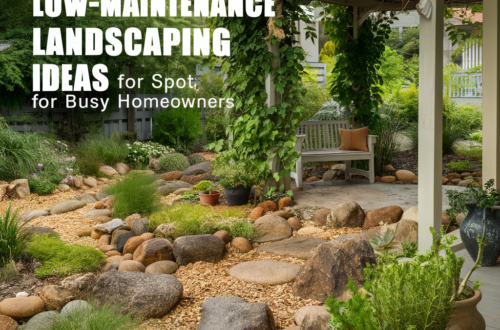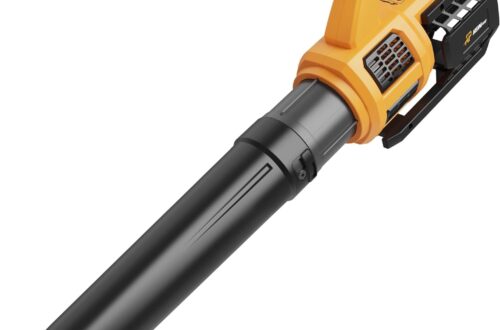Have you thought about growing your own vegetables?
Here are 10 tips for a successful vegetable garden. Growing your own veggies gives fresh produce, better taste, more nutrition, and the satisfaction of self-sufficiency.
- Selecting the Right Location
- Understanding Soil Types and Preparation
- Deciding What to Grow
- Garden Layout and Design
- Water resource
- Mulch
- Pest and Disease Management
- Harvest at the Right Time
Selecting the Right Location
The success of your garden depends on its condition.Choose a location that receives at least 6-8 hours of direct sunlight every day.The area should have well-drained soil and be close to a water source for easy irrigation. Avoid areas with heavy foot traffic or places prone to flooding.
Understanding Soil Types and Preparation
Understanding your soil type is essential for preparing a healthy garden.There are multiple PH levels for growing multiple vegetables.Ideal ph level is 6.5 – 7.0 .Conduct a soil test to determine pH levels and nutrient content. (Read our this article for better PH control kit Best Soil Moisture Meter)Amend the soil with organic matter like compost to improve its structure and fertility.

Deciding What to Grow
Choose vegetables that are suitable for your climate and soil conditions. Consider the space each plant needs and the growing season. Some easy-to-grow vegetables for beginners include tomatoes, lettuce, beans, and radishes.
- Climate Considerations: Know your hardiness zone and select plants that thrive in your region’s climate.
- Space Requirements: Plan your garden layout to ensure each plant has enough space to grow and receive adequate sunlight.
Garden Layout and Design
Designing your garden layout is a key step in ensuring a productive garden. Options include traditional rows, raised beds, and container gardening.

- Traditional Rows: Ideal for large gardens, providing easy access for planting, weeding, and harvesting.
- Raised Beds: Improve soil drainage and aeration, extend the growing season, and reduce soil compaction.
- Container Gardening: Perfect for small spaces or patios, allowing you to grow vegetables in pots and containers.
Water source
Ensure easy access to water supply for your garden. Install a nearby hose or drip irrigation system to make regular watering convenient and efficient. Consider using rain barrels to collect rainwater, which is eco-friendly and cost-effective.
- Watering Needs of Different Vegetables : Understanding the watering needs of your vegetables is crucial. Leafy greens require consistent moisture, while drought-tolerant plants like tomatoes need less frequent watering.
- Efficient Watering Techniques : implement efficient watering techniques to conserve water and promote healthy plant growth.
- Soaker Hoses: Provide slow, deep watering to the root zone, minimising water waste.
- Hand Watering: Allows for precise control but can be time-consuming for large gardens.
- Conserving Water in the Garden : Mulch your garden to retain moisture, and water early in the morning or late in the evening to reduce evaporation .can capture rainwater to meet the irrigation needs of the garden.

Use Mulch
Spread a layer of mulch around your plants to keep the soil moist, minimize weed growth, and stabilize soil temperature. Use organic materials like straw, leaves, or compost for the best results. .Mulching also improves soil health as it decomposes.Organic mulches like straw, leaves, or grass clippings are ideal.
Choosing and Planting Seeds/Seedlings

- Selecting Quality Seeds and Seedlings : Purchase seeds from reputable sources to ensure high germination rates and disease resistance. When buying seedlings, choose healthy, vigorous plants free from pests and diseases.
- Starting sowing seeds : Start sowing seeds indoors or directly in your garden, depending on the vegetable and your climate. Use seed trays or small pots with quality seed-starting mix for indoor sowing. Ensure proper lighting, temperature, and moisture for optimal germination. Once seedlings are strong enough, transplant them to your garden.
- Transplanting Seedlings : Harden off seedlings by gradually exposing them to outdoor conditions before transplanting. Transplant on a cloudy day or in the evening to reduce transplant shock. Water thoroughly after planting.
- Planting Techniques for Different Vegetables : Different vegetables require specific planting techniques. For example, root vegetables need loose soil for root development, while climbing plants like beans need support structures.
Pest and Disease Management
- Common Garden Pests and How to Control Them : Identify common garden pests such as aphids, caterpillars, and slugs. Implement control methods like hand-picking, using insecticidal soaps, and introducing beneficial insects.
- Preventative Measures for Pest Control :Prevent pest infestations by practising crop rotation, interplanting, and maintaining healthy soil. Regularly inspect plants for early signs of pest activity.
- Organic Pest Control Methods : Use organic methods like neem oil, diatomaceous earth, and companion planting to deter pests without harming beneficial insects or the environment. These natural solutions help maintain a healthy, balanced ecosystem in your garden.
- Recognizing Plant Diseases and Treating : learn to recognize symptoms of common plant diseases such as blight, powdery mildew, and root rot. Early detection is key to effective treatment. Use organic fungicides, remove affected plants, and ensure proper spacing and airflow to prevent the spread of diseases.

Harvest at the Right Time
Pick vegetables when they are ripe for the best flavour and nutritional value. Regular harvesting encourages more production, especially in plants like beans and zucchini. Refer to specific guidelines for each vegetable to determine the optimal harvest time. Regular harvesting can also encourage more production in certain plants like beans and zucchini.
Benefits of Growing Your Own Vegetables
- Freshness and Flavor : One of the most significant advantages of growing your own vegetables is the superior freshness and flavour. Unlike store-bought produce, which is often harvested early and transported over long distances, homegrown vegetables can be picked at the exact moment they reach peak ripeness. This not only maximises their flavour but also ensures they retain the highest nutritional value.
- Cost Savings : Growing your own vegetables can significantly reduce grocery bills. By investing time and effort into a home garden, you can enjoy fresh produce at a fraction of the cost of store-bought vegetables.
- Environmental Impact: Home gardening reduces the carbon footprint associated with the transportation of commercial produce.
- Physical Activity: Gardening is a great form of exercise, providing physical and mental health benefits.
- Educational Opportunity: It’s a fantastic way to teach children about nature, responsibility, and where food comes from.
Eat What You Grow!
Enjoy the fruits of your labour by including your homegrown vegetables into meals. Home grown Vegetables are more nutritious, Fresh, and flavorful. Sharing your harvest with family and friends can also be rewarding and encourage healthy eating habits.
FAQs
- How Much Sunlight Do Vegetables Need?
Most vegetables require at least 6-8 hours of sunlight daily. Leafy greens and some root vegetables can tolerate partial shade.
- How Often Should I Water My Garden?
Watering frequency depends on the weather, soil type, and plant needs. Generally, water deeply once or twice a week, allowing soil to dry slightly between waterings.
- What Are the Best Natural Pest Control Methods?
Natural pest control methods include introducing beneficial insects, using neem oil, and creating barriers with row covers. These methods protect plants without harming the environment or beneficial organisms.
- How Can I Improve My Soil Quality?
Improve soil quality by adding organic matter, such as compost or well-rotted manure.Test soil regularly and amend it as needed to maintain proper pH and nutrient levels.
- Can I Grow Vegetables Indoors?
Yes, many vegetables can be grown indoors with adequate light and space. Use grow lights to supplement natural sunlight, and choose compact varieties suited for container gardening.
Enjoy your gardening life with Alllearntreegrow.





